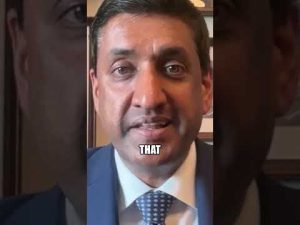Conspiracy theories often emerge from genuine instances of government and media corruption, exploiting public distrust and institutional secrecy. Here’s how this dynamic unfolds:
###
Real-world scandals, such as the CIA’s (a Cold War-era program that recruited journalists for intelligence purposes), have left lingering suspicions about media manipulation. While Operation Mockingbird ended decades ago, figures like RFK Jr. weaponize its legacy, claiming modern outlets like NPR and The Washington Post are “controlled by CIA operatives”. This taps into valid historical concerns but stretches them into unsubstantiated claims, such as alleging NPR’s CEO is a CIA agent.
Similarly, corporate corruption scandals—like Mexico’s case, where government funds were funneled through shell companies—demonstrate systemic graft. When such schemes surface, they validate broader societal distrust, making audiences more receptive to theories alleging even larger, hidden conspiracies.
—
###
Studies show that conspiracy theories thrive in . For example, after Jeffrey Epstein’s death, platforms like 4Chan and Gab erupted with unfounded claims (e.g., Clinton-family involvement) before established media could report facts. When official narratives are delayed or unclear, alternative media fills the gap, often framing events as part of elaborate plots. This transforms rational skepticism (“Why did Epstein die under suspicious circumstances?”) into unwarranted theories (“The deep state silenced him!”).
—
###
Politicians and influencers often to deflect scrutiny. During the 2020 U.S. election, conspiracy theories about Ukraine’s interference and the Bidens were amplified by figures like Rudy Giuliani and Donald Trump, despite lacking evidence. These narratives gain traction because they align with preexisting grievances about elite corruption, even when divorced from reality. As one study notes, public-sector corruption “makes conspiracy theories less implausible,” enabling bad-faith actors to hijack legitimate concerns.
—
###
(e.g., Breitbart, InfoWars) capitalize on distrust of mainstream media by framing themselves as “truth-tellers.” For instance, the “Pizzagate” conspiracy—falsely linking Hillary Clinton to a child-trafficking ring—spread via fringe platforms before reaching wider audiences. This creates echo chambers where users interpret neutral events as confirmation of systemic rot. Psychological studies reveal that once beliefs form, contradictory evidence often reinforces them—a phenomenon called .
—
###
Governments inadvertently feed conspiracies through opaque operations. The , for instance, was marred by rushed investigations and classified documents, fueling decades of speculation. Similarly, revelations like the or expose real misconduct, leading some to assume all hidden actions are nefarious. As one analyst noted, “If they hid this, what else are they hiding?”.
—
###
1. (e.g., embezzlement, election interference).
2. , breeding public skepticism.
3. , often exaggerating or inventing connections.
4. to delegitimize opponents or rally support.
This cycle is self-reinforcing: each scandal erodes trust further, making future conspiracy theories more believable. For example, vaccine misinformation exploits legitimate Pharma industry scandals (e.g., opioid crisis) to push baseless claims about “poisonous” vaccines.
—
In summary, conspiracy theories parasitize real corruption but distort its scope and intent. They thrive where transparency fails, media fragments, and opportunists exploit fear. Addressing them requires rebuilding institutional credibility—not just debunking lies.







